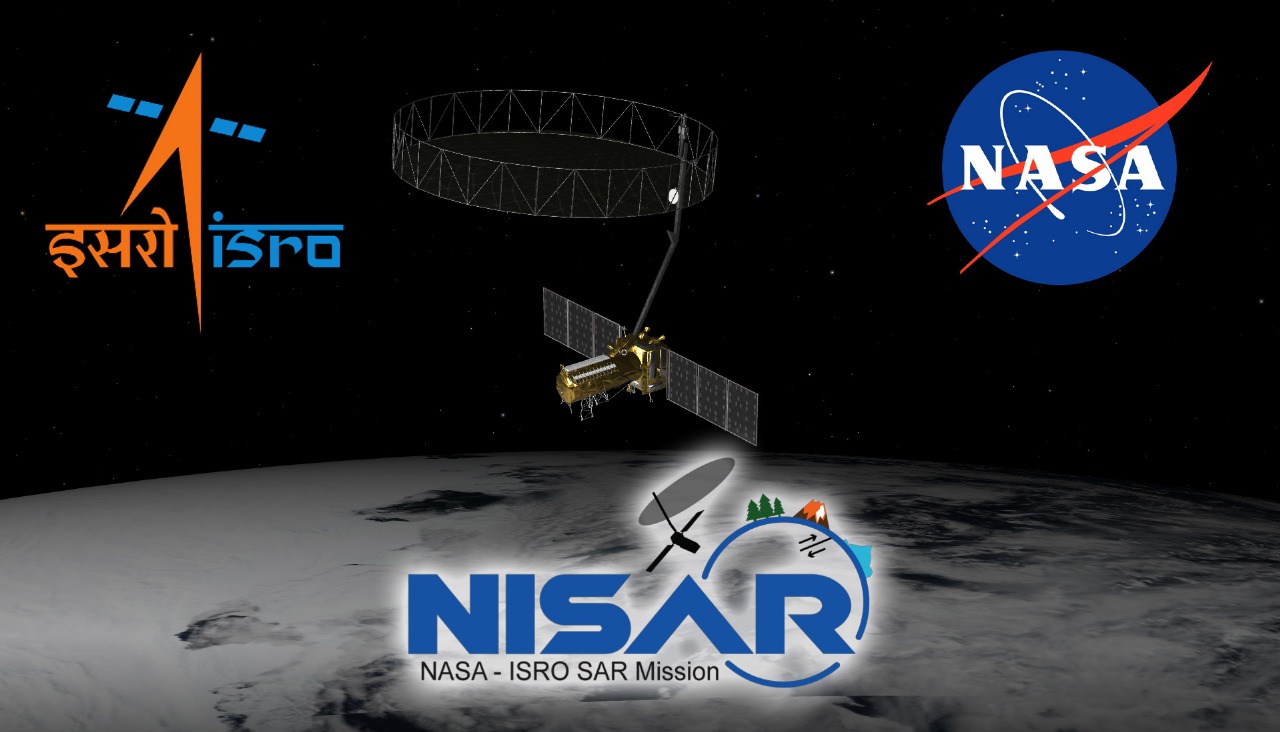The NASA-ISRO Synthetic Aperture Radar satellite, known as NISAR, has been successfully launched from the Satish Dhawan Space Centre in Sriharikota, Andhra Pradesh. This marks the first major collaborative satellite mission between the United States and India, and it’s poised to transform global Earth monitoring with unmatched precision and accessibility.
Key Highlights of the Mission
- NISAR is the world’s first Earth observation satellite equipped with dual-frequency synthetic aperture radar: NASA’s L-band and ISRO’s S-band
- Weighs 2,392 kg and orbits Earth at 747 km in a sun-synchronous polar trajectory
- Features a 12-meter gold mesh antenna—the largest of its kind in low-Earth orbit
- Cost exceeded $1.5 billion and development spanned over a decade
- Data will be freely available to scientists and governments worldwide, typically within hours of processing
Why NISAR Is a Game-Changer
- Dual Radar Technology
- L-band SAR penetrates vegetation, soil, and ice to detect subtle ground deformations
- S-band SAR captures surface-level details like crops, water bodies, and urban structures
- Offers synchronized, layered imagery of Earth’s surface—unprecedented in scale and precision
- SweepSAR Imaging
- Achieves a wide swath of 242 km with high spatial resolution
- Detects changes as small as one centimeter, enabling detailed environmental monitoring
- Open Data Access
- All processed radar data will be made publicly accessible
- Expected to accelerate scientific research, climate modeling, and early disaster alerts
Applications and Impact
- Climate Monitoring
Tracks glacier movement, sea-level rise, and permafrost melt
Helps assess carbon stock and deforestation through forest biomass mapping
- Disaster Management
Detects landslide-prone zones, monitors fault lines for earthquake risks
Supports flood prediction and glacial lake outburst alerts
- Agriculture & Water Resources
Monitors crop cycles and soil moisture levels
Guides irrigation planning and drought assessments
- Urban & Infrastructure Planning
Assesses land subsidence near dams, metro systems, and high-density cities
Aids in resilient city planning and infrastructure safety audits
India-US Collaboration: A Symbolic and Strategic Achievement
- NASA contributed the L-band radar system, GPS receiver, and high-speed data architecture
- ISRO developed the satellite bus, S-band radar payload, and managed launch logistics
- The mission reflects deepening ties in space science, innovation, and diplomacy
Next Steps for NISAR
- Initial commissioning phase and systems check underway
- Full science operations will commence after calibration
- The satellite is slated for a five-year mission life with prospects for extension
Sources: Firstpost, Indian Express, The Hindu, MSN India, and NASA.gov

